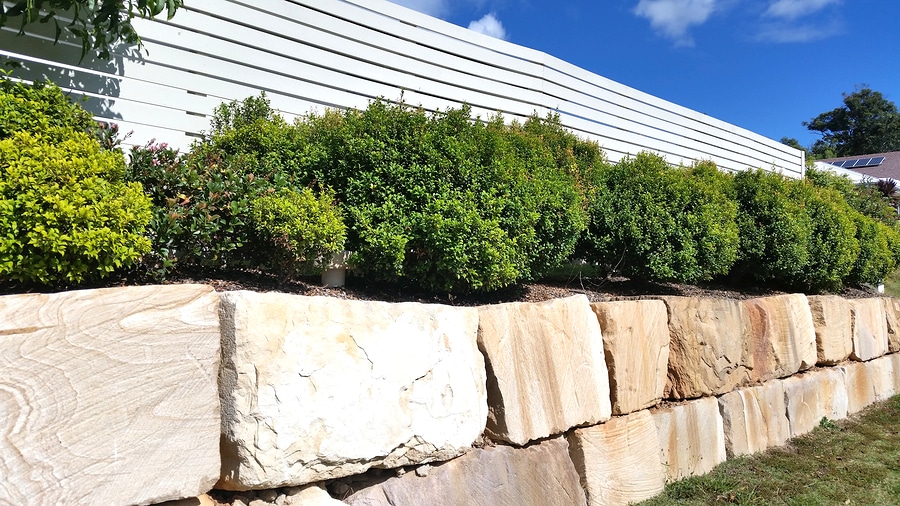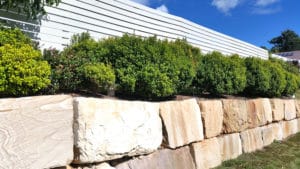What’s the right height for your retaining wall?

 Retaining walls add to the curb value of your home as well as being a practical tool for landscapers. To successfully discern how high your walls should be, you should take the following steps.
Retaining walls add to the curb value of your home as well as being a practical tool for landscapers. To successfully discern how high your walls should be, you should take the following steps.
The first step in determining the right height for your retaining walls is to consider the use of the area you’re creating. Is it merely an aesthetic area with flowerbeds and shrubs? Or a pool or play area? Once you’ve determined what you are going to use your new space for, then you can figure out how tall your retaining walls need to be.
Calculate the height
Look at the grade of the area you’re planning to work on and what the grade will be once you’ve finished. If the finished grade will be four feet lower than the existing grade, your retaining wall will need to be four feet high. If it is a six-foot difference, you will need a six-foot wall. If you have a really big height difference, like twelve feet, you can put in a twelve-foot retaining wall, or you can put in two six-foot walls or three four-foot walls.
Sturdy base
It’s key for your retaining wall to have a strong base, especially if you’re planning on building a stacked-stone retaining wall. A good rule of thumb is to make the base twelve inches deep and six inches wider than the wall, and it should be made of a material – compacted gravel for instance – that drains easily to lessen the pressure on the wall.
Ideal height
The ideal height for a retaining wall is around five feet in the most optimal conditions. The best type of conditions for building a retaining wall is sandy soil that drains easily. Soil that is high in clay puts a lot of pressure on the new wall and it gets even heavier when it’s wet.
Some landscape experts in the Sioux Center or Rock Valley area recommend three to four feet as the best height for a retaining wall. This height is not only the safest, but it’s also a scale that looks good with most landscape designs.
Permits
Some areas require permits for walls that are much taller than four feet, so using this scale will save you time and the hassle of submitting multiple forms and drawings. One wall that’s under four feet will not need a permit, but multiple walls or walls over four feet in height will need a tiered application. You may also need a permit from your local building department if the land above your wall is sloped or unstable, or if there’s a fence installed above it.
Retaining walls can recreate your outdoor space, making whole new areas to work, relax, or play in. They help keep your pool clean, if you have one, and can create flowerbeds where there weren’t any before. A professional landscape company like Outdoor Elements will help guide you in deciding which height is best for your retaining wall project.